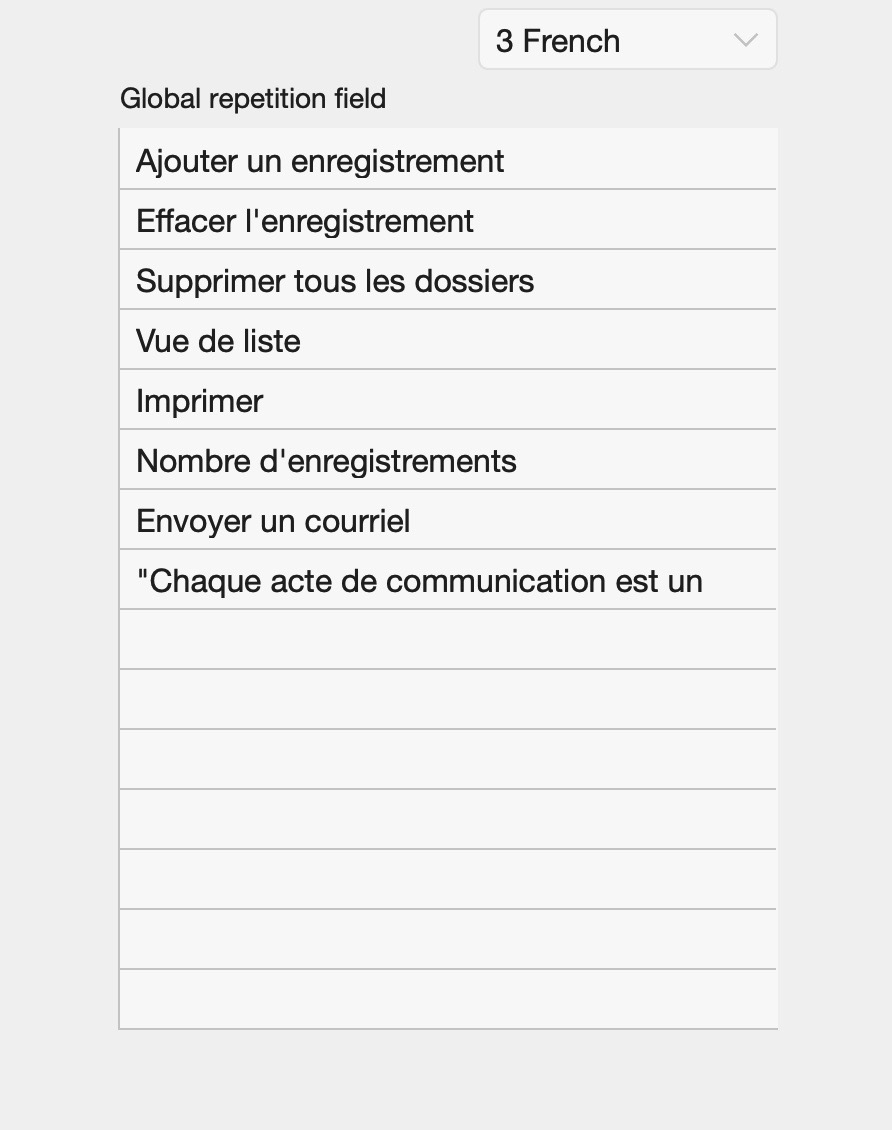Multilingual text labels in FileMaker
An example of how to manage and display multilingual text labels in FileMaker
Create a multilingual FileMaker solution
If you want to create a multilingual FileMaker solution, you need several components.
- The first and most important component is how to create text labels. This is about the data structure over which you create labels and a method to display these labels in the application. How to do that is shown in this sample file, which you can download below.
- A translation can be the next step. Once again, there are two options: You can translate manually or automatically. For automatic translation you can request the free add-on “TWD – Translate with DeepL”from this website.
Requirements for multilingual text labels
When developing a multilingual user interface, keep it as simple as possible. The following requirements should be met:
- Manage multilingual texts in one central location
- Be able to change language at any time
- No relationships should be necessary (global application)
How it works
The text labels are managed in a table. In this table there is a text field for the text labels. This text field has several repetitions. Each repetition represents a language. Suppose you want to create 5 languages, then you need 5 repetitions of this one text field. You can see this as 5 columns if you like. Each column represents one repetition and one language.
It looks something like this:
This table has an additional field with a sequence number that is not the ID. This number is used to identify the text label.
The table of labels is then loaded into the repeats of a global repeating field. The sequence number is used to define the repeat number in which each label is stored. This ensures consistency even if labels are deleted or numbers are skipped.
It looks something like this:
Change languages
Text labels that come from a separate table must be loaded into the global repeating field before they can be seen. The example file shows how to load the values from the table. In order to choose the language, you just have to select the column (or the repetition) of the language you are looking for. This column will then be loaded. When the language is changed, this process is repeated, but with the values of a different column.
Loading text labels happens in a flash. There are hardly any delays, even with well over 1000 text labels.
Display texts in layout
Once you have loaded the language into the global repetition field, you only have to refer to the desired repetition. In your layout, you can refer to any repetition from this global text box. Since it refers to a global text field, no relationships are required. Your text labels can now be used throughout your application.
A display on the layout can be created with <<L::gText[ 127]>> or similar can be achieved. Where “L” is the table, “gText” is the global repeating field and “[ 127]” is the repeating number where the desired text label is located.
In order to easily find and apply text labels, it is recommended to make a window where you can search for texts and easily find the corresponding number. A convenient solution is included in our product “FM Starter“, for example. Ideas on how to do this can be found, for example, in the videos about FM Starter.
If you do not want to do this development yourself, it is recommended to evaluate FM Starter. It’s a cost-effective solution to get started right away with new projects.
Eine Methode, wie man in FileMaker mehrsprachige Textetiketten verwalten und darstellen kann.
A method to manage and display multilingual text labels in FileMaker.



